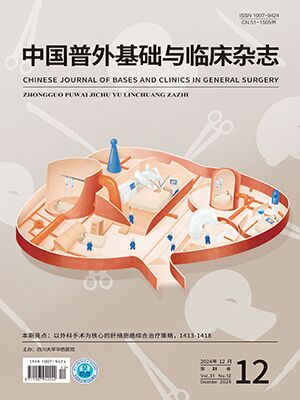| 1. |
Asrani SK, Devarbhavi H, Eaton J, et al. Burden of liver diseases in the world. J Hepatol, 2019, 70(1): 151-171.
|
| 2. |
Palmer WC, Patel T. Are common factors involved in the pathogenesis of primary liver cancers? A meta-analysis of risk factors for intrahepatic cholangiocarcinoma. J Hepatol, 2012, 57(1): 69-76.
|
| 3. |
Caligiuri A, Gentilini A, Pastore M, et al. Cellular and molecular mechanisms underlying liver fibrosis regression. Cells, 2021, 10(10): 2759. doi: 10.3390/cells10102759.
|
| 4. |
Matteson EL, Kelly C, Distler JHW, et al. Nintedanib in patients with autoimmune disease-related progressive fibrosing interstitial lung diseases: subgroup analysis of the INBUILD trial. Arthritis Rheumatol, 2022, 74(6): 1039-1047.
|
| 5. |
Klepfish M, Gross T, Vugman M, et al. LOXL2 inhibition paves the way for macrophage-mediated collagen degradation in liver fibrosis. Front Immunol, 2020, 11: 480. doi: 10.3389/fimmu.2020.00480.
|
| 6. |
Kisseleva T, Brenner D. Molecular and cellular mechanisms of liver fibrosis and its regression. Nat Rev Gastroenterol Hepatol, 2021, 18(3): 151-166.
|
| 7. |
Watanabe Y, Tsuchiya A, Terai S. The development of mesenchymal stem cell therapy in the present, and the perspective of cell-free therapy in the future. Clin Mol Hepatol, 2021, 27(1): 70-80.
|
| 8. |
Shi M, Li YY, Xu RN, et al, Mesenchymal stem cell therapy in decompensated liver cirrhosis: a long-term follow-up analysis of the randomized controlled clinical trial. Hepatol Int, 2021, 15(6): 1431-1441.
|
| 9. |
Tacke F. Targeting hepatic macrophages to treat liver diseases. J Hepatol, 2017, 66(6): 1300-1312.
|
| 10. |
Cheng D, Chai J, Wang H, et al. Hepatic macrophages: Key players in the development and progression of liver fibrosis. Liver Int, 2021, 41(10): 2279-2294.
|
| 11. |
Ramachandran P, Pellicoro A, Vernon MA, et al. Differential Ly-6C expression identifies the recruited macrophage phenotype, which orchestrates the regression of murine liver fibrosis. Proc Natl Acad Sci U S A, 2012, 109(46): E3186-E3195. doi: 10.1073/pnas. 1119964109.
|
| 12. |
Tacke F, Zimmermann HW. Macrophage heterogeneity in liver injury and fibrosis. J Hepatol, 2014, 60(5): 1090-1096.
|
| 13. |
Moroni F, Dwyer BJ, Graham C, et al. Safety profile of autologous macrophage therapy for liver cirrhosis. Nat Med, 2019, 25(10): 1560-1565.
|
| 14. |
King A, Barton D, Beard HA, et al. Repeated autologous infusions of stem cells in cirrhosis (REALISTIC): a multicentre, phase Ⅱ, open-label, randomised controlled trial of repeated autologous infusions of granulocyte colony-stimulating factor (GCSF) mobilised CD133+ bone marrow stem cells in patients with cirrhosis. A study protocol for a randomised controlled trial. BMJ Open, 2015, 5(3): e007700. doi: 10.1136/bmjopen-2015-007700.
|




